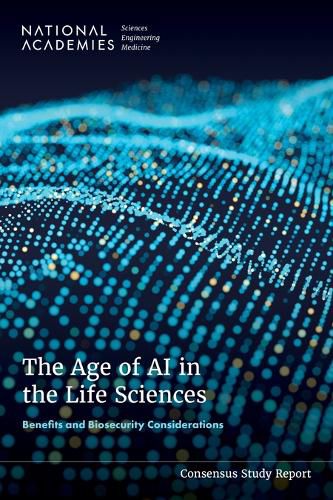Readings Newsletter
Become a Readings Member to make your shopping experience even easier.
Sign in or sign up for free!
You’re not far away from qualifying for FREE standard shipping within Australia
You’ve qualified for FREE standard shipping within Australia
The cart is loading…






Artificial intelligence (AI) applications in the life sciences have the potential to enable advances in biological discovery and design at a faster pace and efficiency than is possible with classical experimental approaches alone. At the same time, AI-enabled biological tools developed for beneficial applications could potentially be misused for harmful purposes. Although the creation of biological weapons is not a new concept or risk, the potential for AI-enabled biological tools to affect this risk has raised concerns during the past decade.
This report, as requested by the Department of Defense, assesses how AI-enabled biological tools could uniquely impact biosecurity risk, and how advancements in such tools could also be used to mitigate these risks. The Age of AI in the Life Sciences reviews the capabilities of AI-enabled biological tools and can be used in conjunction with the 2018 National Academies report, Biodefense in the Age of Synthetic Biology, which sets out a framework for identifying the different risk factors associated with synthetic biology capabilities.
Table of Contents
Front Matter Summary 1 Introduction 2 Design-Build-Test-Learn: Impact of AI on the Synthetic Biology Process 3 AI-Enabled Biological Design and the Risks of Synthetic Biology 4 Promoting and Protecting AI-Enabled Innovation for Biosecurity 5 Importance of Data in AI-Enabled Biological Models Appendix A: Mapping the Landscape of AI-Enabled Biological Design Appendix B: Public Meeting Agendas Appendix C: Committee Biographies
$9.00 standard shipping within Australia
FREE standard shipping within Australia for orders over $100.00
Express & International shipping calculated at checkout
Artificial intelligence (AI) applications in the life sciences have the potential to enable advances in biological discovery and design at a faster pace and efficiency than is possible with classical experimental approaches alone. At the same time, AI-enabled biological tools developed for beneficial applications could potentially be misused for harmful purposes. Although the creation of biological weapons is not a new concept or risk, the potential for AI-enabled biological tools to affect this risk has raised concerns during the past decade.
This report, as requested by the Department of Defense, assesses how AI-enabled biological tools could uniquely impact biosecurity risk, and how advancements in such tools could also be used to mitigate these risks. The Age of AI in the Life Sciences reviews the capabilities of AI-enabled biological tools and can be used in conjunction with the 2018 National Academies report, Biodefense in the Age of Synthetic Biology, which sets out a framework for identifying the different risk factors associated with synthetic biology capabilities.
Table of Contents
Front Matter Summary 1 Introduction 2 Design-Build-Test-Learn: Impact of AI on the Synthetic Biology Process 3 AI-Enabled Biological Design and the Risks of Synthetic Biology 4 Promoting and Protecting AI-Enabled Innovation for Biosecurity 5 Importance of Data in AI-Enabled Biological Models Appendix A: Mapping the Landscape of AI-Enabled Biological Design Appendix B: Public Meeting Agendas Appendix C: Committee Biographies